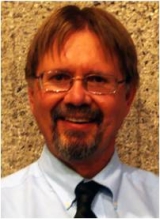 “Our top priority must be to do everything we can to grow our economy and create good, middle-class jobs. That has to be our North Star. That has to drive every decision we make in Washington.”
“Our top priority must be to do everything we can to grow our economy and create good, middle-class jobs. That has to be our North Star. That has to drive every decision we make in Washington.”
– Barack Obama, Economic Report of the President, March 2013
If I wasn’t fair I’d quote Obama thusly: “Our top priority must be to do everything we can to grow our economy… That has to be our North Star. That has to drive every decision we make in Washington.” Then I could say, “See how obsessed the president is with economic growth?” I won’t, because clearly Obama’s growth agenda is intended to reduce unemployment. But that doesn’t mean his growth agenda is scientifically sound or sustainable. Quite the contrary. And, while Obama may not be literally obsessed with economic growth, what should we say about a document that mentions “growth” 371 times, “sustainable” 35 times, and “natural resources” 6 times? The glass is not empty, but it’s nowhere close to half full either.
It’s true that the 452-pager is not straight from Obama’s mouth. Most of the document is really the Annual Report of the Council of Economic Advisers, and probably much of that is written by the staffers of the Council rather than CEA members themselves. But you can bet a document like this is vetted like no other! No president will be quoted, pursuant to his own signature, “Our top priority must be to do everything we can to __________,” unless what fills in the blank is indeed the president’s top priority or very nearly it.
What fills in the blank is “grow our economy” (listed firstly) “and create good, middle-class jobs.” Why not just say ” create good, middle-class jobs and reduce the rate of unemployment”? Better yet, why not “stabilize the economy with a high rate of employment that is sustainable for the long run”? This would allow the president to raise desperately needed awareness of limits to growth, the damage caused by further growth, and the sustainable alternative of a steady state economy. But no, growth is truly at the heart of the president’s agenda, as described in more detail by the Council of Economic Advisers. “GDP” is used 197 times; “ecological footprint” not once.
The report does include a chapter called “Climate Change and the Path Toward Sustainable Energy Sources.” This chapter summarizes the science of climate change — cup has some drops — and makes the conventional economic argument that climate change is a “negative externality” of economic activity. It advances the equally conventional approach of “internalizing” this externality and obviating it by replacing fossil fuels with alternative sources of energy. To summarize the position, “The Administration is committed to a comprehensive energy strategy that supports economic and job growth, bolsters energy security, positions the United States to lead the world in clean energy, and addresses the global challenge of climate change.” We may as well demand better dental hygiene and more money from the Tooth Fairy all at once. In a 90% fossil-fueled economy, a top priority of doing “everything we can to grow our economy” is to climate change what it is to biodiversity loss, water shortage, and pollution: a guarantee that it will worsen.
We can’t blame President Obama or the CEA too much. They are, as noted in the report, driven to some degree by the Employment Act of 1946 as amended by the Full Employment and Balanced Growth Act of 1978. That’s exactly why we need the Full and Sustainable Employment Act and its apt acronym, “Full SEA,” to remind us that the “rising tide” to lift all boats was as sustainable as a Ponzi scheme. We’re out of water and boat-building material.
Pursuant to the Full Seas Act, we’ll have an annual Report to the President on Population, Production, Consumption, and Capacity to help monitor how sustainable our economy is. With population data from the Census Bureau and production data from the Bureau of Economic Analysis, a slim new Bureau of Population and Consumption (BPC) will calculate our ecological footprint to determine how sustainable GDP is. The President will summarize the Report in the annual State of the Union Address. The hope is that one day we can quote something more believable, doable, and laudable:
“Our top priority must be to do everything we can to stabilize our economy and maintain fulfilling jobs for all who need work. This economy has to fit on our planet along with those of other nations, leaving space for other species as well. That has to be our North Star: a steady state economy that is fair, sustainable, healthy and happy.”






